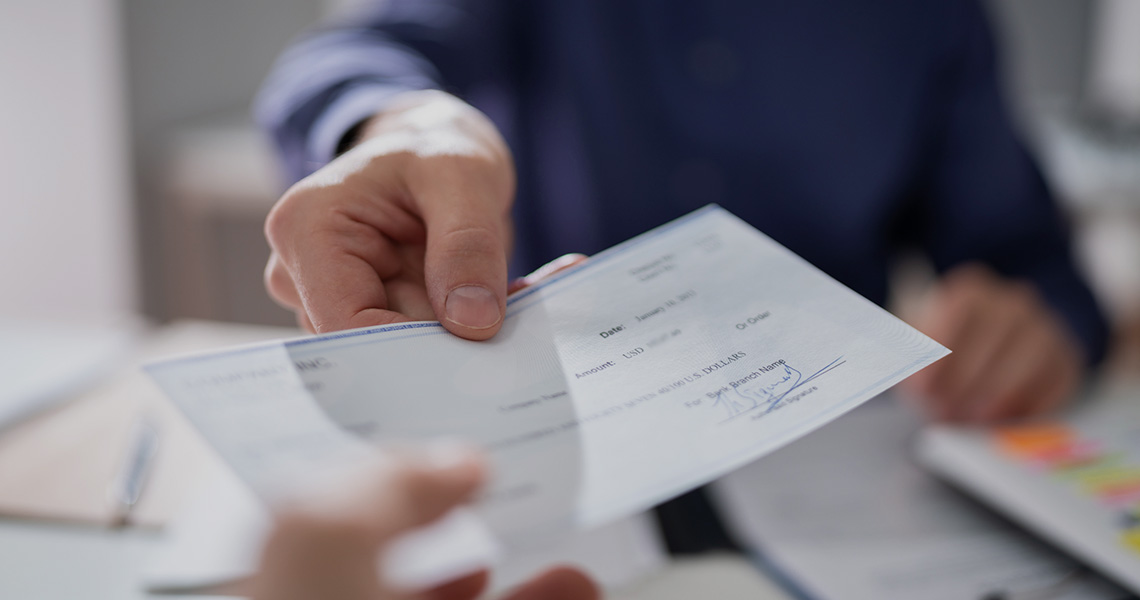The personal injury claims process can take a significant amount of time to complete. When you factor in the investigation process, pre-trial negotiations, insurance claims, and medical evaluations, you can look at up to a year or more to reach the end of it. However, once you complete the claims process, you can receive a significant reward: the settlement check.
When you file a personal injury lawsuit or insurance claim, you can receive compensatory damages to recover from losses sustained in your injury. These damages can include past and future medical expenses, lost wages, property damage, pain and suffering, and possibly punitive damages to punish the at-fault party.
The Steps of Receiving a Settlement Check
As explained to us by Vanguard Attorneys, a personal injury law firm out of Tampa, Florida, the personal injury lawsuit settlement process does not end when the settlement negotiations end. To receive your settlement check, you have to undergo additional steps for release. These steps include signing important documents and release forms, waiting for insurance company processes to clear, paying liens and legal fees, and waiting for a check to clear escrow.
1. Signing Important Documents and Release Forms
When you reach a settlement with the defense attorney and the at-fault party, a document is known as the Order of Settlement will be issued. You and the at-fault party must complete all paperwork required by this document within either 30 or 60 days, depending on the court’s orders. The most important settlement document is the release.
The defense attorney for the at-fault party will prepare the release, which will outline the terms and conditions of your settlement. This document will state that you will not pursue additional damages from the at-fault party for the specific injury you already filed a claim for, along with other information deemed appropriate by the defense. The release can be very short or lengthy, depending on the circumstances of your case and the drafting attorney.
Your attorney will review the document to ensure that all the terms and conditions are in your best interest. If your attorney does not agree with some of the terms, he or she will approach the defense attorney to come to an agreement. If the attorneys cannot come to an agreement about the terms of a release, a judge will have to step in and resolve any issues. This process could lengthen the amount of time it takes for you to receive your check.
Once your attorney and the defense attorney come to an agreement about the release, you will receive it. Make sure to read the document carefully before you sign it and ask your attorney to clarify any information you do not understand. You will then sign the form, which you will need to do in the presence of a notary public. Once you sign the form, you cannot change any of the terms – your signature indicates full acceptance of the terms. After you sign the release, your attorney will send the document to the defense attorney and the insurance company for the next step.
2. Insurance Companies Release the Check
The at-fault party’s insurance company is typically the entity responsible for paying out your settlement. This insurance company will not release or write a check without obtaining the release form. Once you complete and sign this form and the company receives it, it will begin to process the check. This insurance company has a legal obligation to write the check as soon as it receives your release, but internal issues may slow this process.
The insurance company will usually make the check payable to both you and your attorney. They do not make the check payable to you because your attorney will need to deduct certain funds from the check before you can receive it. After the insurance company processes your check, they will send the check directly to your attorney’s office, where the next phase of the settlement payout process will begin.
3. Check Deposited, Liens Paid
Next, the insurance company’s check will arrive at your attorney’s office. The attorney will deposit your check into an escrow account, where it will need to remain while the bank clears the funds. One of the purposes of placing a check into an escrow account is to ensure that the insurance company has the funds to pay out your settlement. Once the check clears in the escrow account, your attorney can disburse your portion of the settlement funds.
However, if you owe any outstanding liens, your attorney will have to retain your check for a longer period. A lien refers to any outstanding debt you may owe to certain entities, related to either your case or another charge against you. If you have any pending liens, your attorney cannot release your check until he or she pays them out of your settlement funds.
- You can owe liens for any unpaid bills to your medical provider.
- You may have to reimburse your insurance company or public health care providers to pay for your medical treatment costs related to the injury or illness involved in your case.
- If you owe child support to your former spouse, your attorney will have to deduct this amount from your settlement to pay off the outstanding balance.
- If you fired another attorney before settlement and hired your current attorney, the fired attorney may impose a lien to receive payment for his or her legal services. Unlike other forms of liens, this payment may come out of your attorney’s portion of your settlement instead of your own.
It is very important to pay off liens prior to receiving your settlement funds. You could face legal consequences if you do not pay a lien to the government, a healthcare provider, or an insurance company. Luckily, your attorney should handle this process on your behalf.
4. Handle Any Legal Fees and Costs
Before you receive your settlement check, your attorney will first deduct legal fees and costs from the settlement amount after he or she pays your liens. Prior to hiring your attorney, you should have signed a payment agreement, often known as a contingency fee agreement that states that your attorney will deduct an agreed-upon percentage of your settlement for legal fees.
Contingency fees help reduce your out-of-pocket costs and make obtaining legal services as accessible as possible. On average, attorneys deduct 33% from the settlement as payment. The agreement will vary from attorney to attorney. Some attorneys charge a lower contingency fee if he or she is able to settle the case out of court. If you do not receive a settlement at the end of your claim, you do not have to pay any legal fees.
For example, if you receive a settlement for $100,000, your attorney will deduct $33,000 if you have a 33% contingency fee agreement. You will receive the remaining $67,000 in your settlement check, minus any liens and associated costs.
In addition, your attorney may deduct certain fees and expenses from your settlement amount that he or she may have paid for during the course of your case. Your attorney should let you know if he or she intends to do so in your payment arrangement. These fees may include costs for filing fees, record requests, expert witnesses, evidence collection, accident reconstruction, and other necessary services.
5. Receive Your Settlement Check
After your attorney clears all your liens, legal fees, and applicable case costs, the firm will write you a check for the remaining amount of your settlement. Your attorney will send you the check and forward it to the address he or she has on file for you. Depending on the location of your firm and your proximity to the area, you will likely receive your check within six weeks after mailing. You can deposit these funds into whatever account you choose and begin your financial recovery process.
Can You Speed Up the Process?
The check disbursement process can take months to complete. If the at-fault party files an appeal to your lawsuit, you could face an additional two years before you can receive your compensation. However, you and your attorney could engage in additional actions to speed up the process.
- Your attorney can draft a release form before the conclusion of your case. At some point in the trial or negotiation process, your attorney will realize that a settlement is imminent. By drafting an acceptable release form before the defense attorney provides his or her initial document, you and your attorney can cut down on the editing process.
- Prior to the end of the settlement process, your attorney can provide you with the documents that the defense attorney needs before he or she can issue the final check. You will not have to wait to sign these documents if you prepare them beforehand.
- Your attorney can invest in expedited mailings to help you receive documents faster and send documents to the defense attorney more quickly. As a result, the defense attorney cannot claim to have been waiting for the documents to arrive for a long time, since your attorney can track when the defense received them.
- The liens process can also slow down the reception of your check. If you believe that you will have to pay for certain liens, speak to your attorney about the situation beforehand. You can request a partial distribution of your funds prior to the settlement of any outstanding liens.
The settlement check process may take a long time to complete, but you will receive the funds awarded to you at the end of it. Following the above tips can help expedite the process, and so can obtaining the services of a personal injury attorney to assist with your case from the beginning. Good preparation, the anticipation of certain barriers, and careful analysis of agreements will help facilitate the settlement check process.



No Comment